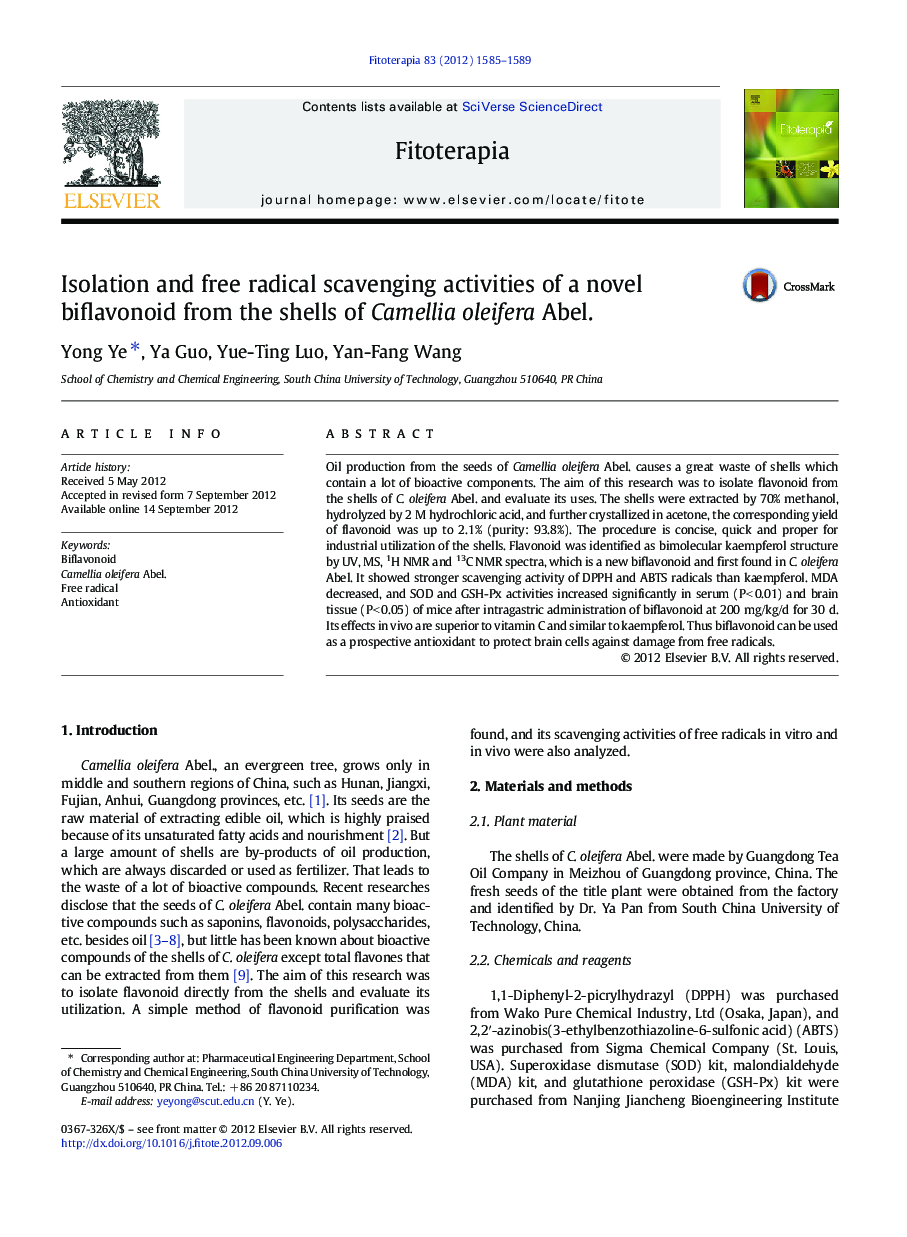| Article ID | Journal | Published Year | Pages | File Type |
|---|---|---|---|---|
| 2538741 | Fitoterapia | 2012 | 5 Pages |
Oil production from the seeds of Camellia oleifera Abel. causes a great waste of shells which contain a lot of bioactive components. The aim of this research was to isolate flavonoid from the shells of C. oleifera Abel. and evaluate its uses. The shells were extracted by 70% methanol, hydrolyzed by 2 M hydrochloric acid, and further crystallized in acetone, the corresponding yield of flavonoid was up to 2.1% (purity: 93.8%). The procedure is concise, quick and proper for industrial utilization of the shells. Flavonoid was identified as bimolecular kaempferol structure by UV, MS, 1H NMR and 13C NMR spectra, which is a new biflavonoid and first found in C. oleifera Abel. It showed stronger scavenging activity of DPPH and ABTS radicals than kaempferol. MDA decreased, and SOD and GSH-Px activities increased significantly in serum (P < 0.01) and brain tissue (P < 0.05) of mice after intragastric administration of biflavonoid at 200 mg/kg/d for 30 d. Its effects in vivo are superior to vitamin C and similar to kaempferol. Thus biflavonoid can be used as a prospective antioxidant to protect brain cells against damage from free radicals.
Graphical abstractFigure optionsDownload full-size imageDownload high-quality image (92 K)Download as PowerPoint slide
